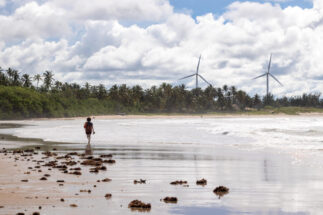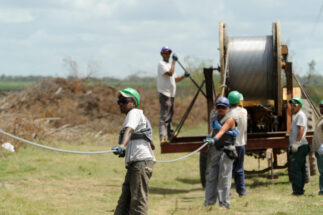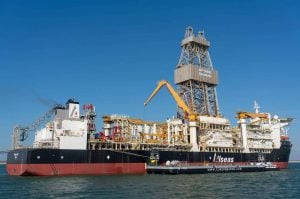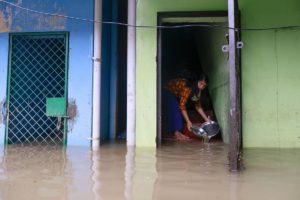In an attempt to avoid the worst effects of climate change, more than 190 countries have pledged, through the Paris Agreement, to pursue the goal of limiting global average temperature rises to 1.5C above pre-industrial levels. Scientists have said that achieving this will require bringing global emissions of carbon dioxide to “net zero” by 2050 – a huge challenge that Latin America is beginning to tackle.
Not to be confused with “zero emissions” – generating no emissions at all – net zero requires balancing surplus emissions with other actions, such as reductions or removals. Although governments and companies are committing to reducing greenhouse gases emissions where possible, some sectors are expected to continue emitting for decades to come.
Polluters can attempt to offset these emissions by contributing to initiatives in other places or sectors that remove or reduce emissions. An airline, for example, may look to build a wind farm to compensate for its emissions; though currently expensive and not yet feasible at an impactful scale, others may look to use technology that removes emissions directly from the atmosphere; far more common, though not without its own issues, are schemes to plant trees and restore soils to capture more carbon dioxide.
In Latin America, the short term trumps the long term. Many countries are still locked into fossil fuels
The text of the Paris Agreement underscores the need for net zero, requiring states to “achieve a balance between anthropogenic emissions by sources and removals by sinks of greenhouse gases in the second half of this century”, based on principles of equity and in the context of sustainable development.
So far, 137 countries have committed to net zero emissions, but in different ways and on different timelines. In Latin America, Chile, Uruguay, Panama and Ecuador have included the goal in public policy documents, Argentina, Brazil and Colombia have publicly committed to it, and Peru, Mexico and the Dominican Republic have begun to discuss the target at government level.
“Nobody doubts that the vision for 2050 is net zero emissions. Without that goal, the 1.5C target cannot be met,” said Manuel Pulgar Vidal, leader of WWF’s climate and energy practice, and a former Peruvian environment minister. “But in Latin America, the short term trumps the long term. Many countries are still locked into fossil fuels.”
The short and the long term
Since the entry into force of the Paris Agreement in 2016, Latin American governments have presented their roadmaps of actions to reduce their greenhouse gas emissions by 2030. These documents are known as a nationally determined contribution (NDC), and are submitted to the UN’s climate change secretariat every five years.
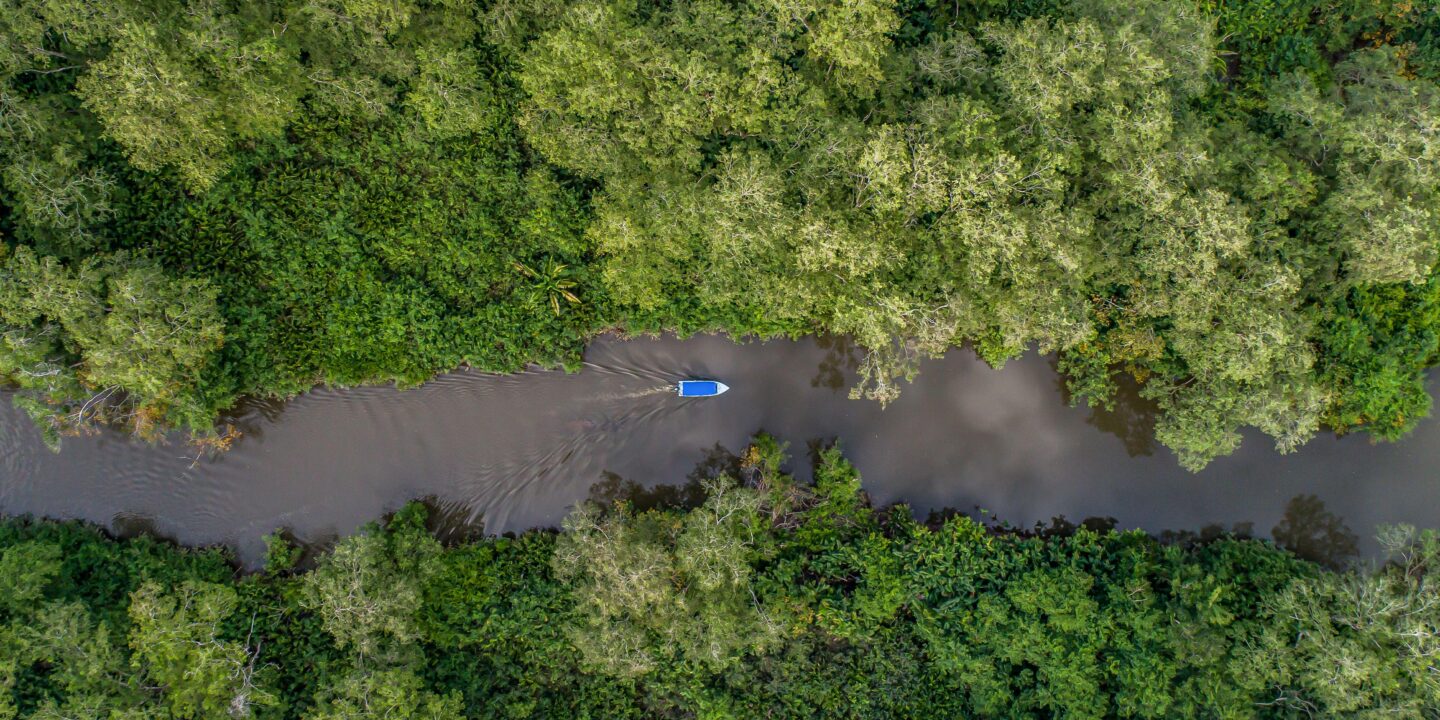
NDCs are already in place and are being implemented. Most governments in the region updated them in 2020 and 2021 to include more ambitious reductions of their emissions. But it is still not enough. So far, Costa Rica is the only country in the region whose plan is considered ambitious enough, with its commitments deemed “almost sufficient” by independent analysts Climate Action Tracker.
But NDCs alone are not enough, according to Pulgar Vidal. “We now have to start developing long-term strategies that allow governments to look at NDC compliance and see how far or close they are to a 2050 target. That allows you to connect [your strategies] much more with your economy,” he added.
Reducing an economy’s emissions requires much more long-term thinking than the targets of a 2030 NDC. Some governments in the region have already started working on 2050 climate plans, their long-term decarbonisation strategies, in which the goal of net zero emissions is often included.
Mexico, Uruguay, Chile and Colombia are the countries in the region that have already submitted their long-term decarbonisation strategies and are now implementing them, with other countries in the process of developing them.
At this rate, we are going to have to extract more than we emit – a possibility that, technologically, does not yet exist
“We have to reduce real emissions immediately and in this decade in order to reach net zero emissions by 2050. The problem is that we are not moving in the right direction,” said Isabel Cavelier of the Colombian NGO Transforma. “At this rate, we are going to have to extract more than we emit – a possibility that, technologically, does not yet exist.”
In 2018, the Intergovernmental Panel on Climate Change (IPCC), the UN’s climate science body, determined that to limit global warming to the Paris Agreement’s more ambitious target of 1.5C, emissions would have to be reduced by 45% by 2030, compared to 2010 levels, and reach net zero by 2050. The remaining emissions would have to be captured from the atmosphere.
According to the IPCC, reaching net zero emissions is technically feasible. Achieving it, however, will require parallel and immediate action in all sectors of the economy, mainly to replace fossil fuel use. It will also require moderating meat consumption and transforming industrial production.
While some sectors can reduce their emissions today – such as energy, by switching to renewables, or land-use change by halting deforestation – others have a more complex task, such as aviation and shipping, both of which still lack large-scale technological options for decarbonisation. This is where emissions capture becomes necessary.
But while there are solutions in nature to capture emissions, such as afforestation, there is broad consensus that technological options for carbon capture and storage have not yet been tested or proven at scale, are costly, energy intensive and can have unintended negative impacts.
The way ahead
In Latin America, the sectors responsible for the highest emissions are agriculture, forestry and land-use change, followed by transport, electricity, industry and waste. The region accounts for less than 10% of global emissions, a small contribution in contrast to countries such as the United States, China and India.
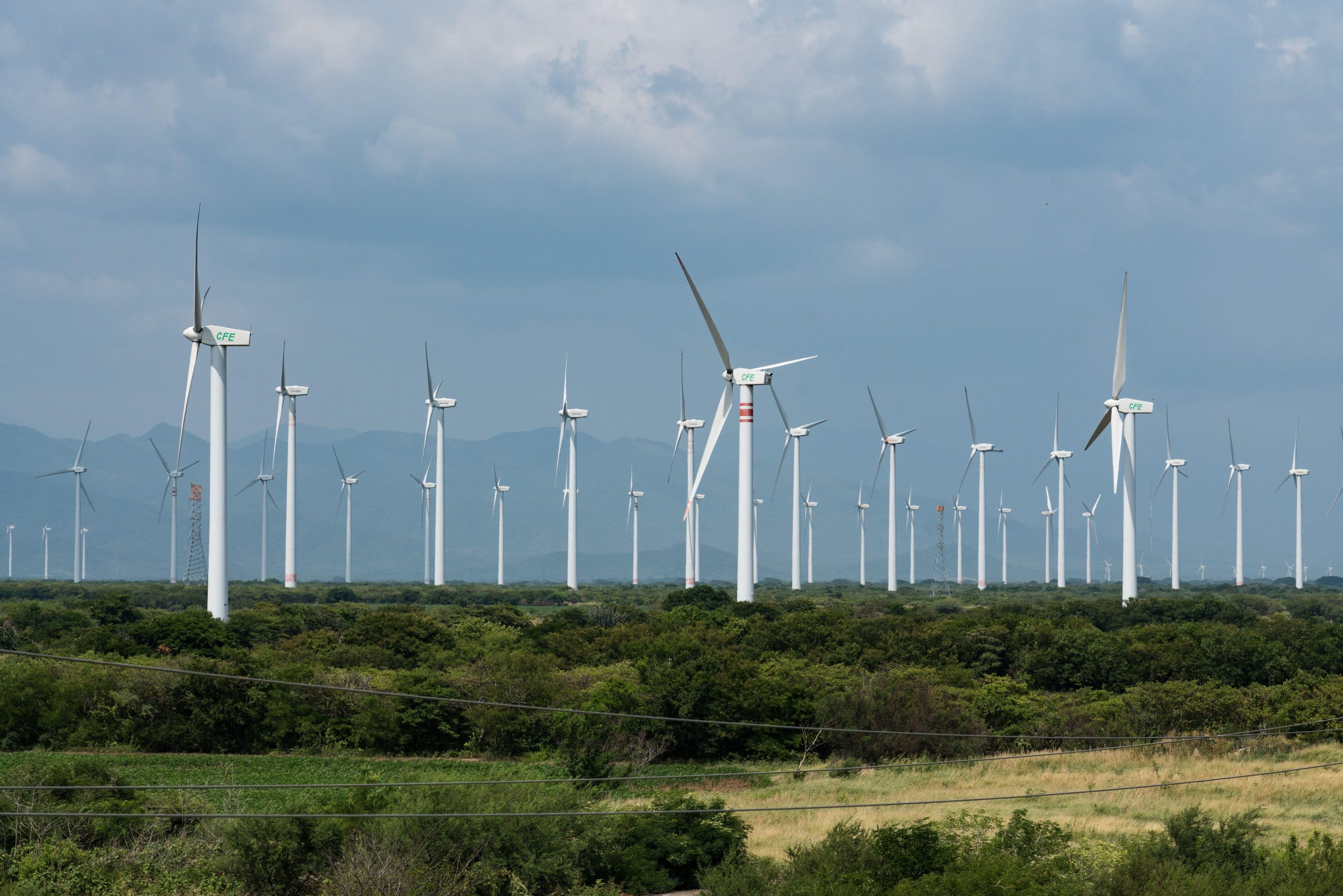
According to the Inter-American Development Bank (IDB), to meet the objectives of the Paris Agreement, Latin American countries should redirect between 7% and 19% of annual public and private spending. The IDB says these resources do not represent a net cost, as the benefits of climate action outweigh the costs of the climate crisis.
In fact, the IDB estimates that a low-carbon economy in Latin America can generate up to 15 million net jobs and 1% net additional growth. While jobs would be lost in livestock and fossil fuels, more would be added in renewables, agriculture, construction and forestry.
Achieving net zero emissions by 2050 could bring net benefits of US$41 billion in Costa Rica, US$140 billion in Peru and US$7 billion in Chile, for example. Regionally, it is estimated that US$621 billion could be saved by reaching net zero in the energy and transport sector alone.
However, there are still many barriers to the adoption of solutions needed to achieve net zero. For example, energy subsidies may incentivise the use of fossil fuels instead of renewables, and farmers may not have the capacity to reduce the use of synthetic fertilisers. Such challenges will require government action to overcome.
“We are so far behind on climate action in Latin America that transformations in certain economic sectors are going to be difficult. The most difficult case is land use change – the one that emits the most but for which we need more adaptation,” Transforma’s Cavelier said. “Few governments have maintained a state agenda on climate issues.”
From 7 to 18 November, representatives of governments, civil society and multilateral organisations will take part in the UN’s COP27 climate summit. There, new announcements of short- and long-term climate commitments are expected, such as from Argentina, which has already anticipated that it will present its 2050 strategy at the summit.



